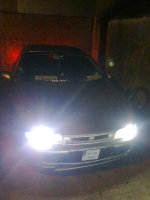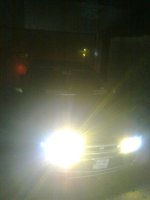hi people , been looking on ebay for some hids, just wondering if anyone has tried any of the cheaper versions, if so is there much difference between the two
cheers
cheers
my brother has some on his bravo, just for the headlights(low beam?) and there just as good as having full beam on normal bulbs.
he has them dipped, but still just good as any.standard headlights.
what I mean by cheap is, non branded HIDS compared the higher priced branded HIDS, there's some on ebay for £40. I only really want some for the winter and,just for the rest of summer, my brother has some on his bravo, just for the headlights(low beam?) and there just as good as having full beam on normal bulbs.


But if they are as good as full beam then thats dangerous. Dipped is meant to be less than full beam. Its for the safety of other road users.
